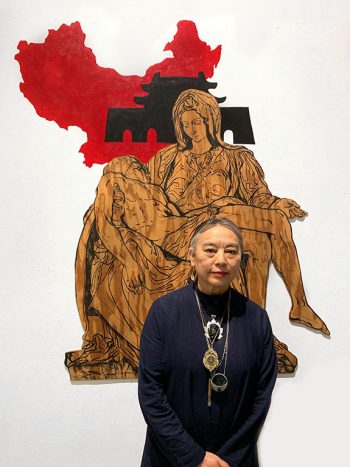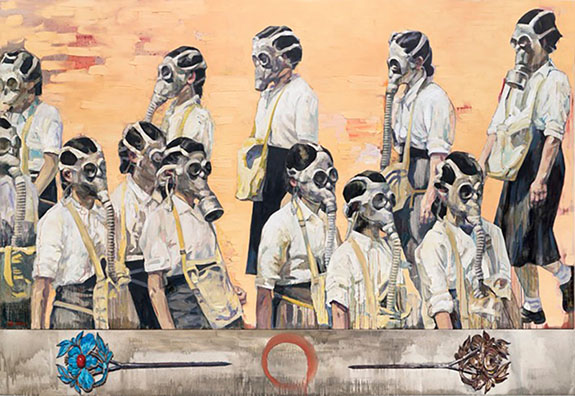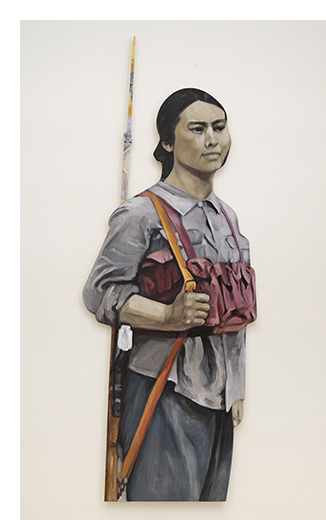by David M. Roth

The authorities did not specify their objections. However, given the subject matter depicted in the Oakland artist’s works, it’s not unreasonable to speculate. She was born in the northeastern city of Changchun in 1948 and survived the tumult and chaos of the Great Leap Forward, during which millions starved, and the Cultural Revolution, during which Liu, like millions of youths, was sent to a rural re-education camp and forced to perform manual labor.
After earning a degree in art from the Central Academy of Fine Art in Beijing, she moved to the U.S. in 1984 to study at UC San Diego under Alan Kaprow, a key figure in performance art. Liu subsequently transformed her early training in Socialist Realism into Social Realism – a non-propagandistic art that addresses the broader issues of modernity, morality, gender, survival and, most of all, memory. Her subjects have included everything from peasants and prostitutes to soldiers and aristocrats. In her work she neither embraced or openly criticized China’s state-sponsored ideology, although some paintings, in light of recent events, could be misinterpreted as doing the latter.

For example, had the exhibition, titled Hung Liu: Passers-by, gone forward, it would have included a 2011 painting called Twelve Hairpins of Jinling. Based on a World War II photo, it shows a group of children wearing gas masks, a scene eerily similar to those playing out in Hong Kong, where, for the past several months, protesters have battled police, demonstrating against laws that Beijing is trying to impose on the territory. Other works slated for inclusion in the exhibition are familiar to Bay Area viewers. They include Old Gold Mountain, a large-scale installation involving a section of train track set on a pile of 300,000 fortune cookies that deals with the thwarted aspirations of Chinese immigrants during the Gold Rush, and Avant-Garde, a 1993 self-portrait in which the artist shows herself as the rifle-toting Red Army cadre she once was. How the latter two works (and others of similar ilk) might have offended the Xi Jinping regime is unclear.
But, as Tinari, UCCA’s director, observed in the above-referenced letter, “There has been a tightening in the civil sphere in China in recent months. There has also been an increase in tension between Hung's native and adopted countries. Topics that were once relatively open for discussion are now increasingly scrutinized. An exhibition that might have been green-lighted a
The cancellation, Liu wrote to friends, “triggered many terrible memories. I was forced to recall the first half of my life in China. When the Cultural Revolution started in 1966, it was a war against culture. All non-proletarian values would be wiped out entirely — western ideology, literature, art and music. I remember a huge mountain of books burning for days in front of the Cultural Ministry building.”
While Chinese artists have long been accustomed to negotiating the opaque strictures of the nation's cultural authorities, the current crackdown, which includes forcing the Pompidou Center in Shanghai to censor its inaugural exhibition, points to how progress, once made, can be quickly reversed. Recognizing that reality, Liu agreed to pull nine of her paintings from the exhibition, but even that failed to placate authorities.
“I never thought that my work had such power to require censorship, which maybe is a badge of honor,” she continued. “Still, I am sad this has happened.”
# # #
Learn more about Hung Liu.
About the author:
David M. Roth is the editor and publisher of Squarecylinder.